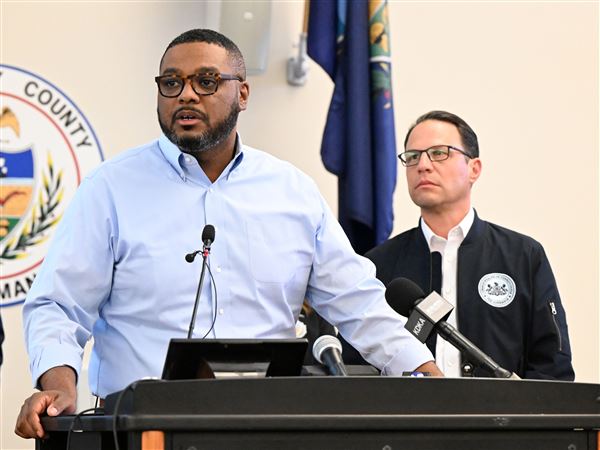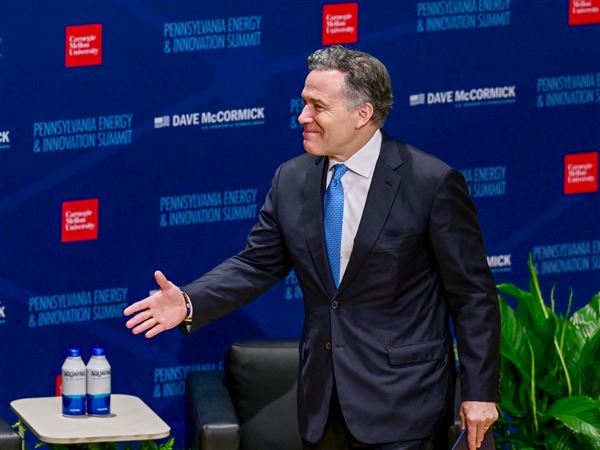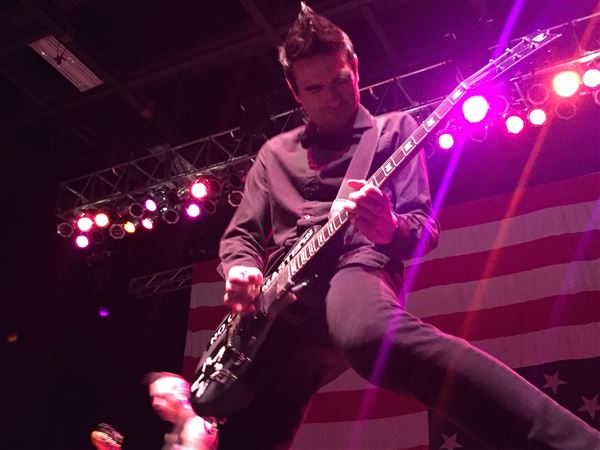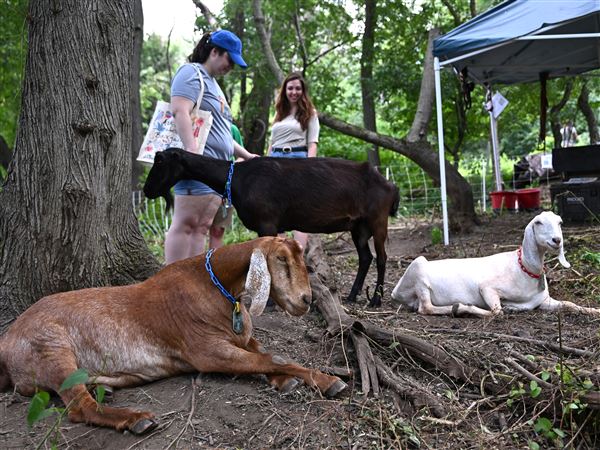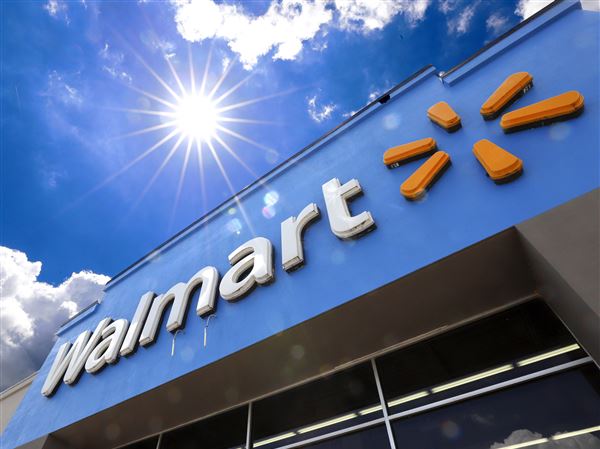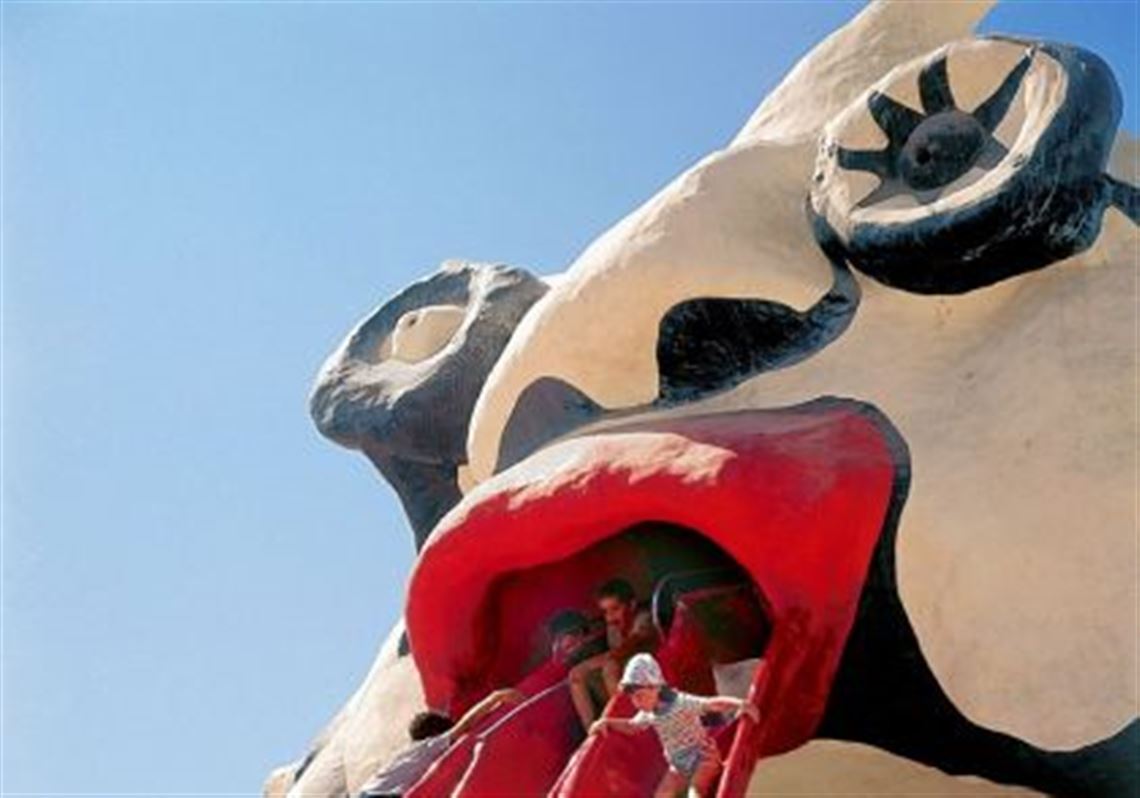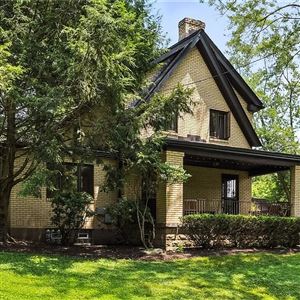"Is it, can it be -- art?" one may be tempted to ask about the large, colorful, worm-like structure outside Carnegie Museum of Art in Oakland.
The Lozziwurm is both a play sculpture and an example of 20th-century urban design -- it was designed in 1972 by the Swiss sculptor Yvan Pestalozzi. The structure is in dialogue with an exhibition at the Carnegie, "The Playground Project," a showcase of photographs, models and video of different kinds of play spaces and play sculptures in the U.S., Europe and Japan. Although several are still in existence, they were mostly designed and constructed between the 1940s and '80s.
Where: Heinz Architectural Center, Carnegie Museum of Art, Oakland.
When: Through Aug. 11. 10 a.m.-5 p.m. Mon.-Sat.; till 8 p.m. Thurs.; noon-5 p.m. Sun.
Admission: $17.95; $14.95 seniors (65 and over); $11.95 students/children 3 and over; free for members and children under 3.
Information: 412-622-3131 or www.cmoa.org.
The exhibition as it stands now will close Aug. 11, but it will reopen Oct. 5 as part of the Carnegie International. In its final version, "The Playground Project" will also feature a display by Tezuka Architects as well as a collaborative video by artists Ei Arakawa and Henning Bohl.
Play is one of the principal themes of the 2013 International.
"Play is an interesting way to explain how you walk through the world," said Daniel Baumann, one of three curators of this year's International. "Structurally, if you think about how a playground is built, it is defined space. You have objects within that space. A kid or a person has to get in there and discover what kind of relationship [he or she] wants to have with it."
Mr. Baumann believes that people have a similar dynamic with museums. "Our argument is that museums are the exact same kind of space. A museum is a contained space with objects, and visitors have to figure out what relationship they want with those objects."
The undefined nature of these spaces, Mr. Baumann added, allows for free thinking:
"Things got very commercial in the last 20 years. Whatever you do, somehow [you] get told that it should be purposeful, or take place within an economic system. I think that the big power of play is that you do test things out without thinking where they lead. ... For innovation, you need to be free. And I think that a museum can also do that."
One driving idea behind the show was the philosophy of DIY. In its current state, the exhibition comprises large pieces of what looks like plywood covering the walls of the gallery. Printed images are nailed onto the plywood, and white sheets of descriptive text are taped on with large strips of colorful duct tape. There are quite a few videos emanating from big, cubic, black vintage TVs.
"When we thought about the show, one question was: How do you present that kind of material? How authoritarian do you want to be?" Mr. Baumann said.
The theme of the playground led Mr. Baumann's urban-planner wife and guest curator, Gabriela Burkhalter, to try to create something relaxed and inviting. For that reason, the images are not originals but printed copies. They are not behind glass. The TVs were not chosen for esoteric or aesthetic reasons, but because that was what they had lying around, so to speak. In theory, this is a show that anyone could mount.
The do-it-yourself spirit echoes some of the playgrounds presented in the show. Divided roughly into four "types" of playgrounds, one type is literally "DIY." These emerged in the 1970s in the U.S. as initiatives promoting the anti-authoritarian power of communities to shape the public spaces around them. Other designers, such as those of the "Adventure" playgrounds, emphasized the creative power of kids to shape their own environment and play space (some playgrounds even barred parents from entering).
The exhibition is open so that children who attend the Carnegie summer camp can interact with it. During one activity, they are invited to design and create their own miniature models of playgrounds or play sculptures.
Mr. Baumann hopes the exhibition will motivate cities, or whoever else might be induced to create a playground, to be more expansive in their thinking, perhaps taking a cue from the children themselves:
"In Frick Park on Beechwood, you have the Blue Playground, and the most popular thing is a slide. On the way to go there, kids find cardboard, and use it to slide down, and they've noticed that if they use it they go much faster. Plastic boxes make it even faster. That's innovation, when kids figure out that a plastic box makes the slide go faster."
First Published: July 24, 2013, 8:00 a.m.

